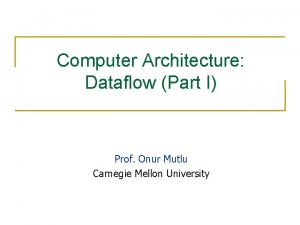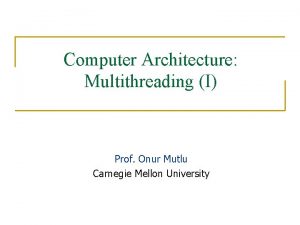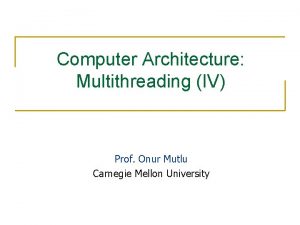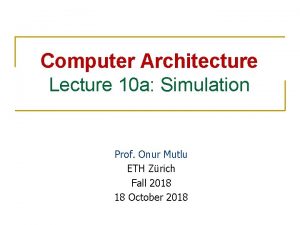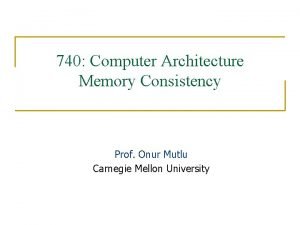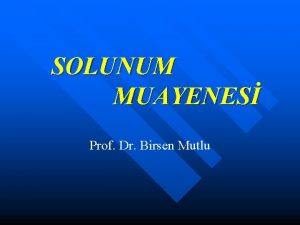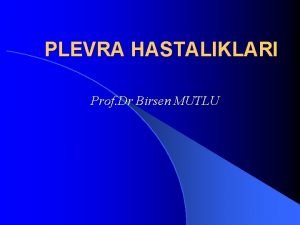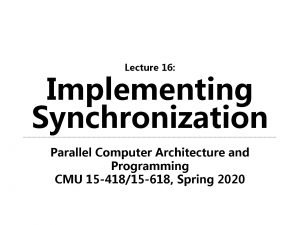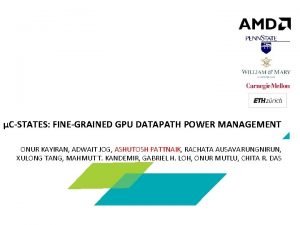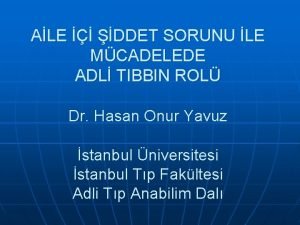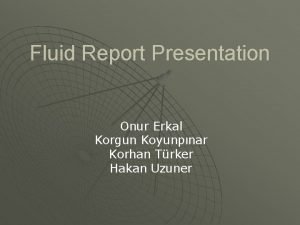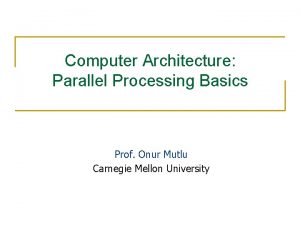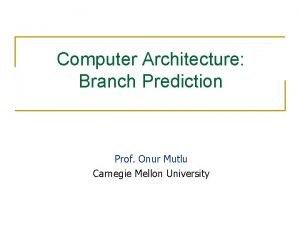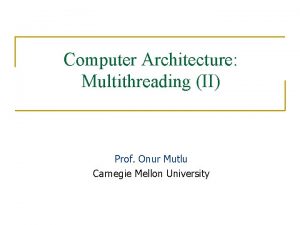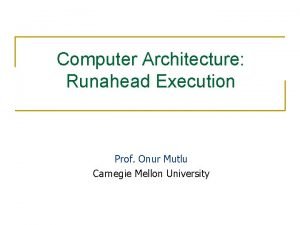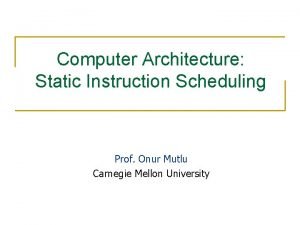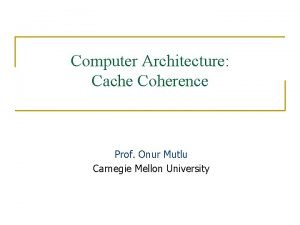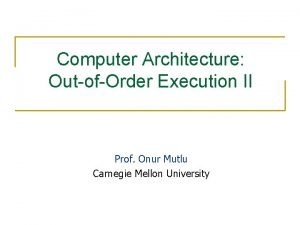Computer Architecture Parallel Task Assignment Prof Onur Mutlu













- Slides: 13

Computer Architecture: Parallel Task Assignment Prof. Onur Mutlu Carnegie Mellon University

Static versus Dynamic Scheduling n Static: Done at compile time or parallel task creation time q n Dynamic: Done at run time (e. g. , after tasks are created) q n Schedule does not change based on runtime information Schedule changes based on runtime information Example: Instruction scheduling q q Why would you like to do dynamic scheduling? What pieces of information are not available to the static scheduler? 2

Parallel Task Assignment: Tradeoffs n n Problem: N tasks, P processors, N>P. Do we assign tasks to processors statically (fixed) or dynamically (adaptive)? Static assignment + Simpler: No movement of tasks. - Inefficient: Underutilizes resources when load is not balanced When can load not be balanced? n Dynamic assignment + Efficient: Better utilizes processors when load is not balanced - More complex: Need to move tasks to balance processor load - Higher overhead: Task movement takes time, can disrupt locality 3

Parallel Task Assignment: Example n n Compute histogram of a large set of values Parallelization: q q q Divide the values across T tasks Each task computes a local histogram for its value set Local histograms merged with global histograms in the end 4

Parallel Task Assignment: Example n How to schedule tasks updating local histograms? (II) q q q n Static: Assign equal number of tasks to each processor Dynamic: Assign tasks to a processor that is available When does static work as well as dynamic? Implementation of Dynamic Assignment with Task Queues 5

Software Task Queues n What are the advantages and disadvantages of each? q q q Centralized Distributed Hierarchical 6

Task Stealing n Idea: When a processor’s task queue is empty it steals a task from another processor’s task queue q q Whom to steal from? (Randomized stealing works well) How many tasks to steal? + Dynamic balancing of computation load - Additional communication/synchronization overhead between processors - Need to stop stealing if no tasks to steal 7

Parallel Task Assignment: Tradeoffs n Who does the assignment? Hardware versus software? n Software + Better scope - More time overhead - Slow to adapt to dynamic events (e. g. , a processor becoming idle) n Hardware + Low time overhead + Can adjust to dynamic events faster - Requires hardware changes (area and possibly energy overhead) 8

How Can the Hardware Help? n Managing task queues in software has overhead q n Especially high when task sizes are small An idea: Hardware Task Queues q q q Each processor has a dedicated task queue Software fills the task queues (on demand) Hardware manages movement of tasks from queue to queue There can be a global task queue as well hierarchical tasking in hardware Kumar et al. , “Carbon: Architectural Support for Fine-Grained Parallelism on Chip Multiprocessors, ” ISCA 2007. n Optional reading 9

Dynamic Task Generation n Does static task assignment work in this case? n Problem: Searching the exit of a maze 10

Computer Architecture: Parallel Task Assignment Prof. Onur Mutlu Carnegie Mellon University

Backup slides 12

Referenced Readings n Kumar et al. , “Carbon: Architectural Support for Fine-Grained Parallelism on Chip Multiprocessors, ” ISCA 2007. 13
